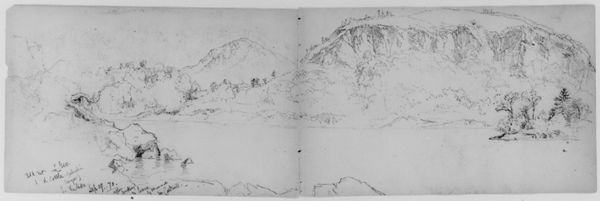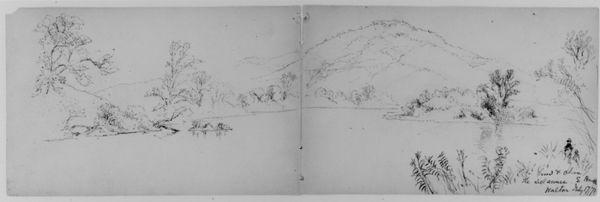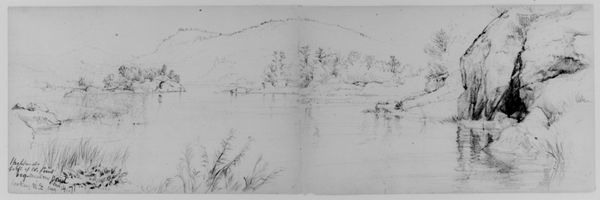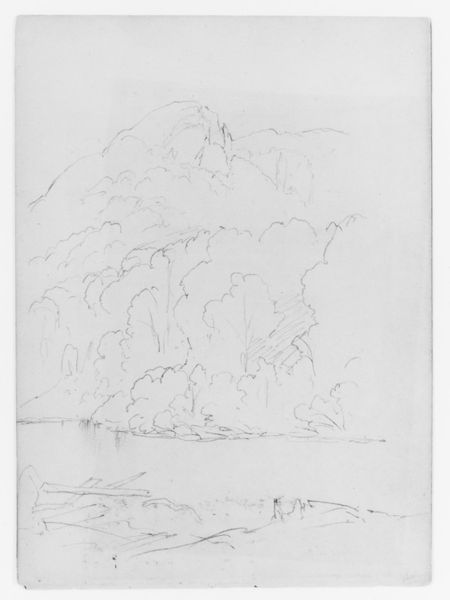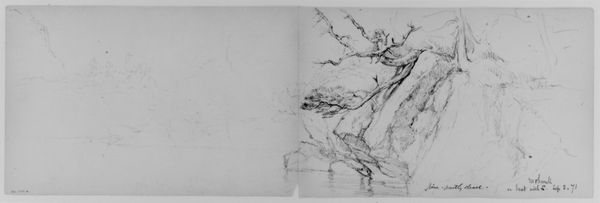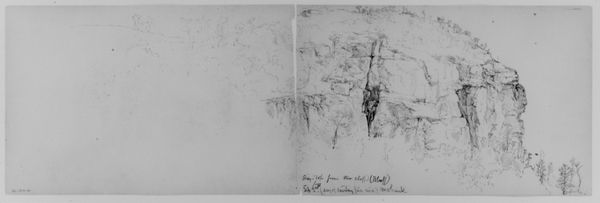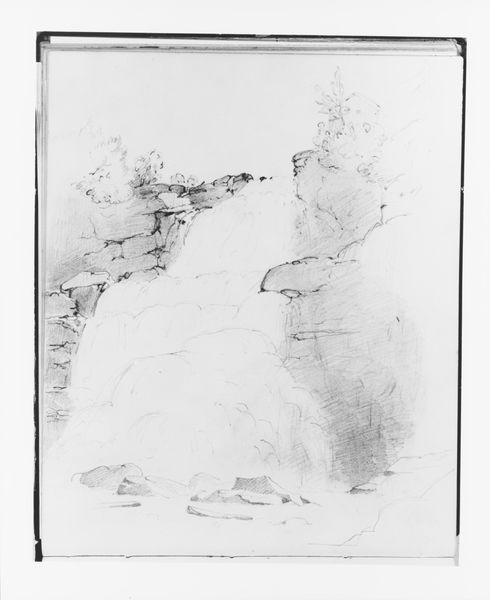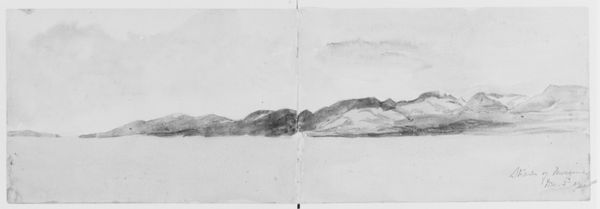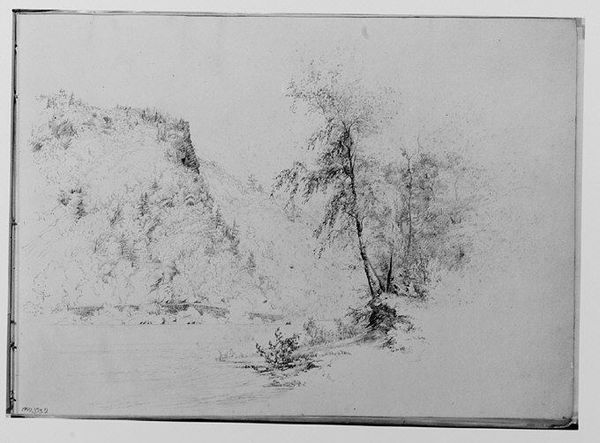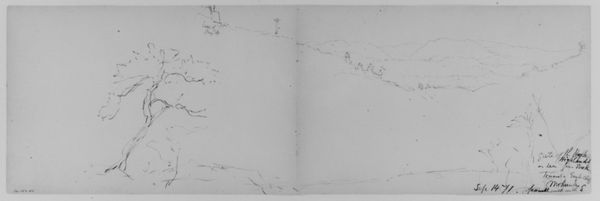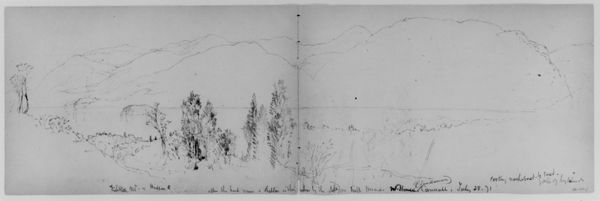
Dimensions: 5 1/2 x 8 3/4 in. (14 x 22.2 cm)
Copyright: Public Domain
Curator: This pencil drawing, titled "Mohonk, 1871 (from Sketchbook)," was created around 1870 by Daniel Huntington and now resides in the collection of the Metropolitan Museum of Art. Editor: My initial feeling is quietude, even loneliness. The delicate pencil strokes give it a ghostly quality, like a memory fading at the edges. Curator: It’s fascinating how this seemingly simple landscape sketch touches upon complex themes of identity and belonging. Artists in the 19th century frequently represented untouched nature to reinforce colonial narratives, subtly claiming ownership of land. Editor: I see the iconic tree clinging to the rock, a symbol of resilience in the face of the elements. Its posture mirrors the rocky cliff: permanence and defiance of the water. Are there similar persistent themes in Huntington's other landscapes? Curator: That's insightful. This landscape fits squarely within the Hudson River School tradition of romanticism, but we have to consider what "romantic" meant then, within a project of colonial expansion and Indigenous displacement. What appears peaceful could mask much more. Editor: Do you think Huntington would have been conscious of this narrative he may have inadvertently taken part in? Curator: The intent isn't the sole point of analysis, but context is key. Looking at Huntington’s overall career we see a focus on portraits of influential figures. This focus, when contrasted with the rendering of nature, invites inquiry as to what each serves, individually, and together. Editor: Looking at the composition itself, I note how much empty space exists. That almost weightless expanse above the water. The silence I sensed earlier becomes more intense when the emptiness becomes clearer. Perhaps Huntington did capture some sense of loss? Curator: Whether intentional or not, art from the period preserves cultural memory. Today, with critical awareness, we can interpret these symbols beyond their surface aesthetic, accounting for intersectional historical experiences. Editor: It’s truly compelling how the light touch of a pencil can speak to such dense histories and emotions. Curator: Absolutely. "Mohonk, 1871" reminds us that art isn't just what we see; it is what we question.
Comments
No comments
Be the first to comment and join the conversation on the ultimate creative platform.
